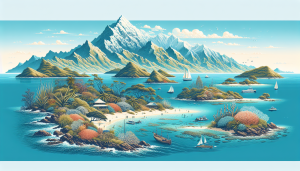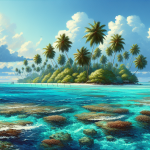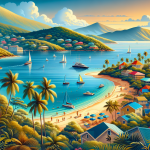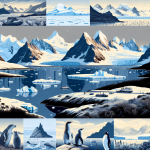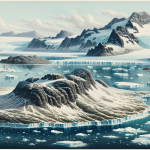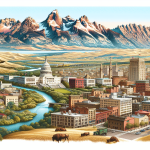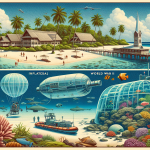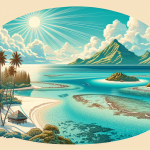Discovering the United States Minor Outlying Islands: A Hidden Gem of the Pacific
The United States Minor Outlying Islands are often overshadowed by more prominent travel destinations, but these remote territories offer a unique and unparalleled experience for those willing to explore. These islands, scattered across the Pacific and the Caribbean, are unincorporated territories of the United States. They include Baker Island, Howland Island, Jarvis Island, Johnston Atoll, Kingman Reef, Midway Atoll, Navassa Island, Palmyra Atoll, and Wake Island. While some of these islands are uninhabited, they hold significant ecological, historical, and strategic importance. This article delves into the fascinating aspects of the United States Minor Outlying Islands, guiding you through their history, natural beauty, and the incredible biodiversity that awaits adventurous travelers.
The Historical Significance of the United States Minor Outlying Islands
Early Discoveries and Cultural Importance
The United States Minor Outlying Islands have a rich history that dates back to the early explorations of the Pacific and Caribbean. For instance, Midway Atoll played a crucial role during World War II, notably during the Battle of Midway, which was a turning point in the Pacific Theater. The islands were first discovered by European explorers in the 18th and 19th centuries, and many were later annexed by the United States.
Strategic Military Importance
Several of these islands have served as strategic military bases. Wake Island, for example, was a critical outpost during World War II and continues to play a role in US military operations. The Johnston Atoll was used for nuclear testing during the Cold War, and its remnants remind us of the island’s pivotal role in global military history.
The Ecological Wonders of the United States Minor Outlying Islands
Diverse Marine Life
The waters surrounding these islands are teeming with life. Kingman Reef and Palmyra Atoll are particularly renowned for their vibrant coral reefs, which support an astonishing variety of marine species. These reefs are some of the most pristine in the world, making them perfect destinations for diving and snorkeling enthusiasts.
Unique Wildlife
The islands are home to several endangered and endemic species. Baker Island and Howland Island serve as critical nesting sites for seabirds. The islands’ isolation has allowed many species to thrive without the pressures of human encroachment. Conservation efforts are crucial in maintaining these delicate ecosystems, and several organizations are actively involved in protecting the biodiversity of these islands.
Flora and Fauna
The flora on these islands is equally captivating. Native vegetation includes various types of grasses, shrubs, and trees that have adapted to the harsh conditions of the islands. The vegetation supports a unique ecosystem that is different from the mainland United States, offering a glimpse into the adaptability of plant life in isolated environments.
Traveling to the United States Minor Outlying Islands
How to Get There
Traveling to these remote islands requires careful planning. Most of the islands are not easily accessible, and special permits are often required. Midway Atoll is one of the few islands that offers limited opportunities for eco-tourism. Visitors usually have to arrange trips through specialized tour operators who can navigate the complex logistics involved in reaching these remote locations.
What to Expect
Due to their isolation, the islands offer a different kind of travel experience. Accommodations are often basic, and visitors should be prepared for a rugged adventure. The lack of modern amenities is compensated by the breathtaking natural beauty and the sense of being in a truly untouched part of the world.
Conservation Efforts and Environmental Challenges
Protecting Marine and Terrestrial Ecosystems
The United States Minor Outlying Islands are at the forefront of global conservation efforts. Organizations such as the U.S. Fish and Wildlife Service and the National Oceanic and Atmospheric Administration (NOAA) are actively involved in preserving the unique ecosystems of these islands. Efforts include monitoring wildlife populations, controlling invasive species, and restoring native habitats.
Climate Change Impact
Climate change poses a significant threat to these islands. Rising sea levels and increasing temperatures can have devastating effects on the delicate ecosystems. Conservationists are working tirelessly to mitigate these impacts through various initiatives, including habitat restoration and climate resilience projects.
Community Involvement
Local communities and indigenous groups play a vital role in the conservation efforts. Their traditional knowledge and practices are invaluable in managing and protecting the islands’ natural resources. Collaborative efforts between government agencies, conservation organizations, and local communities are essential in ensuring the long-term preservation of these unique environments.
Conclusion
The United States Minor Outlying Islands may not be on every traveler’s radar, but they offer a rare opportunity to explore some of the most pristine and ecologically significant areas on the planet. From their historical importance to their incredible biodiversity, these islands are a testament to the resilience and beauty of nature. Whether you’re a history buff, a nature enthusiast, or an adventurous traveler, the United States Minor Outlying Islands have something extraordinary to offer. By visiting these islands, you not only get to experience their unspoiled beauty but also contribute to the ongoing conservation efforts that are crucial in preserving these hidden gems for future generations.
